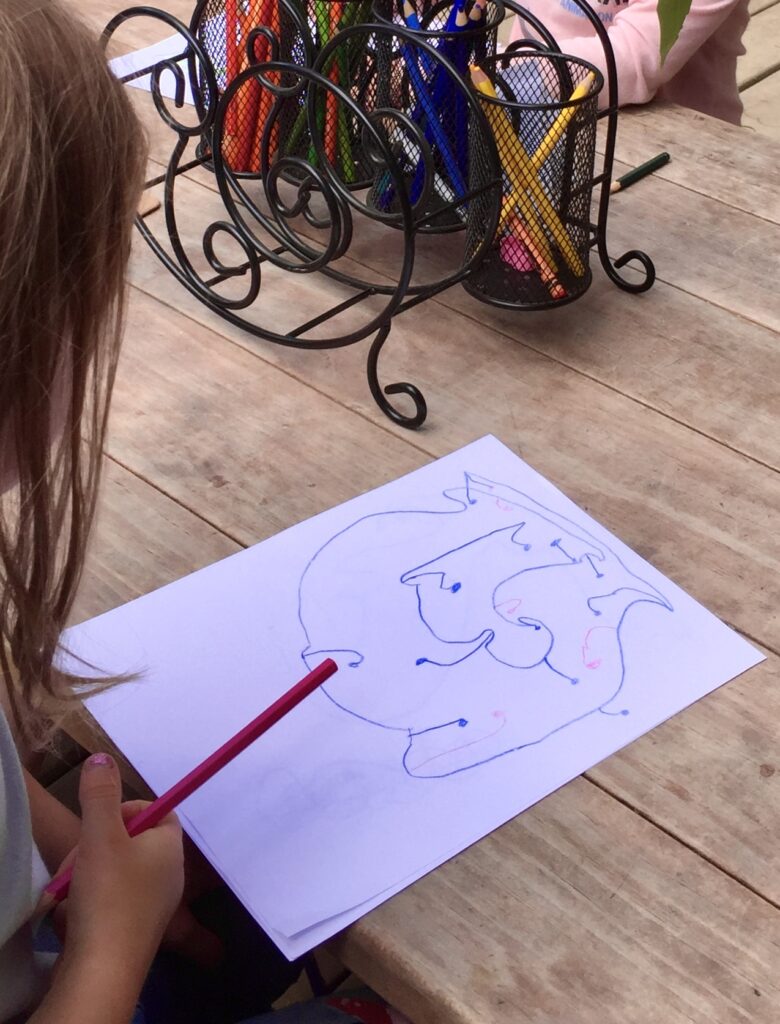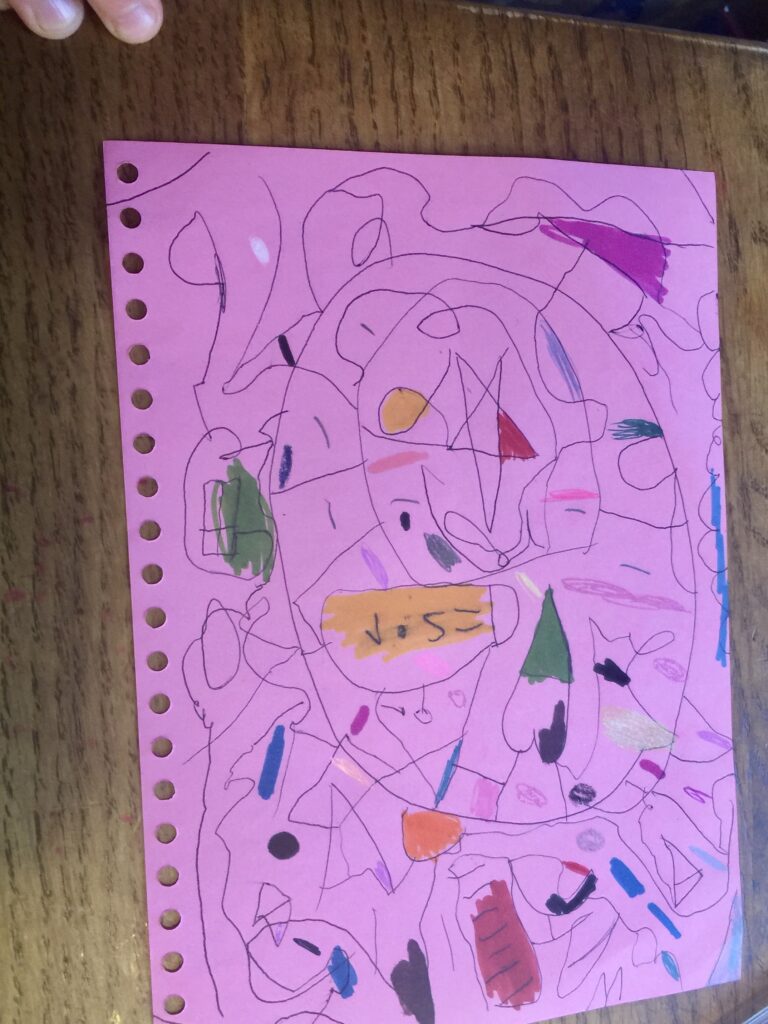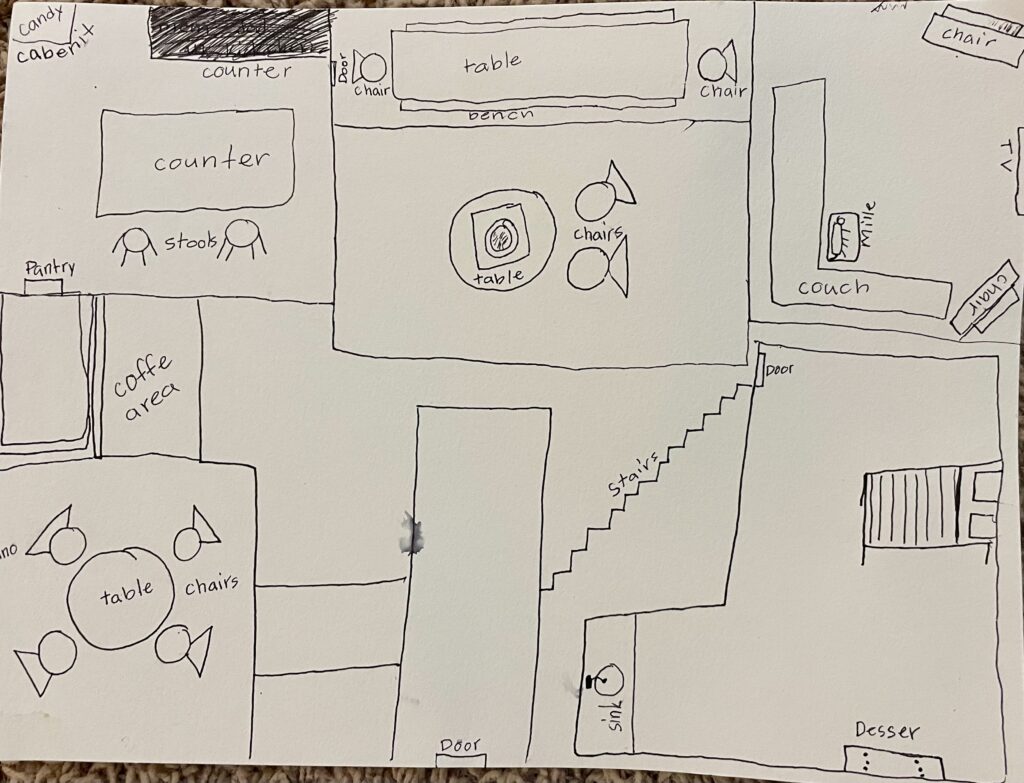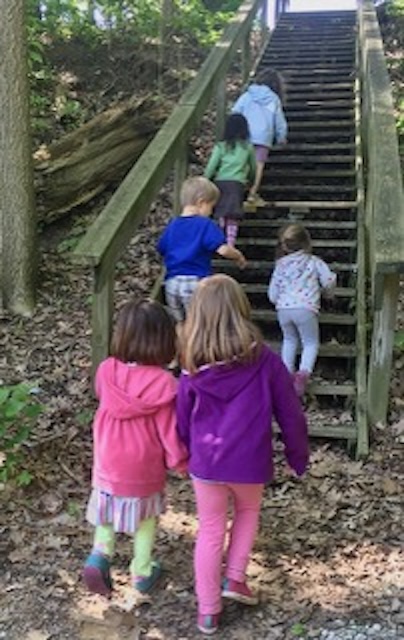Mapping Fun for Young STEM Learners

Five-year-old Amelia—our budding cartographer—has captured the attention of every child in the room as she shares her latest map drawing: “You walk out of my front door and turn right. Then you go this way and you are at my swings and slide. If you walk out of my front door, turn left and walk past my wagon, you will be at my gardens, the fire pit and the wood pile!”
We have been reading some really great books about maps recently, which have inspired a lot of creative thinking and map drawings.
When children create and play with maps, they’re learning math without even realizing it. Using maps helps children learn about distance and concepts like near, far and next to. Children begin to figure out how objects relate to other objects, such as where they are in space and how far apart they are. Later, the children will use numbers to measure distances and angles. But, for now, they’re just starting to understand these concepts.

Preschool children, in particular, are very curious about how things are positioned and where they are in relation to each other. Whether they’re building with blocks, modeling with clay, or setting the table in the play kitchen, they are exploring space.
The more often early learners play with maps, the better they’ll understand space when it’s time to learn about geometry. Reading physical maps may be a lost art, but it’s a fun and important skill to tackle nonetheless.
Our brains can reason, create, analyze, and process information all day long. They also enable us to move around in our environment with an innate sense of direction. This skill is called spatial orientation, and it’s like having an internal GPS system in our brains.
Spatial orientation helps us understand our relationship to the world we live in as it helps us navigate through space.
Children are natural explorers. They come into the world ready to experiment, investigate, and learn through play. As they engage in this process of exploration and discovery, they not only change the structure of their brains but strengthen the skills they need to be engaged, flexible learners throughout their lives.

“I made the path that Sam follows,” shares three-year-old Michaela. “Remember how Sam does all those curves?”
Sam is a cat in Joyce Hesselberth’s delightful book Mapping Sam, which follows the path of a cat as he travels through his neighborhood. There’s a lot going on in Michaela’s map, but it all makes perfect sense when she explains it to her friends. Michaela’s drawing skills are still developing, but her spatial reasoning as she shows us the path is remarkable.
Some of our favorite mapping books are also wordless. Museum Trip by Barbara Lehman is a wonderful picture book about maps and mazes. I love books without words because they slow us all down to concentrate on the pictures rather than language—and we all see things a bit differently. It is interesting to see how books without words seem to level the playing field. Regardless of our age or reading ability, we are all equal.
Try introducing young children to simple maps of familiar places such as their classroom or playground. Talk about where objects are located on the map and how they’re connected. This will help the children understand the concepts of distance and direction.
As the children become more proficient at mapping, you can make your map activities more challenging. For example, you might create treasure maps together and hide a toy somewhere in the classroom or outdoor playground. The children can use their emerging navigational skills to follow the map and find the treasure!

Research shows that children who have a deep understanding of spatial relationships are more likely to succeed in STEM fields. So keep encouraging them to explore and play with spatial concepts—it’s helping them build important math skills!

For more real-life applications, whenever you are traveling along a familiar route, narrate the directions out loud. For example, in the car, you can say: “At this corner with the fire hydrant, we turn right! At the next stop sign, we turn left and we will see the grocery store.”
I often narrate directions when the children in our program walk to the local park (see photo above): “Climb the stairs and then turn right and follow the sidewalk past the mailbox to the park.”
Wishing you many happy early “map” adventures!
Interesting way to introduce mapping
Interesting way to introduce maps. We will be making maps of our school this year. We take walks on a daily basis and we will now map the route we take.
Good
I will be introducing mapping to my preschool class when I return from winter break. It was great!
love the ideas
love the idea. for the younger ones we pretend to be pirates and make a map to point to where the treasure is.
nice
Nice ideas for this age group